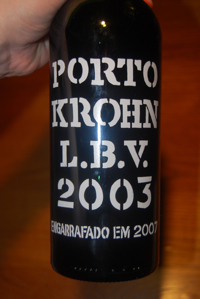|
Sweet Wine and Dessert Wine
What Is Sweet Wine?Sweet wines are wines that have sugar in them so that they taste sweet. These wines can vary from only off-dry, with just a bit of sweetness, to sticky sweet with tons of residual sugar. Generally, the very sweetest wines are considered dessert wines because they are usually drunk after dinner or with a dessert course.Some table wines are made only slightly sweet, such as some German and Austrian wines (particularly the Kabinett, Spätlese and Auslese wines) and Vouvray from the Loire Valley (particularly the Demi-Secs). Others are quite sweet but can vary in the amount of sweetness. There are many types and styles of sweet wine, made from various regions, types of grapes and from different methods. Typically, dessert wines can age well for a long time. Wines such as Port, Madeira, Sauternes and the like can easily age 50 years or more in a cool cellar! How Are They Made?Normally, if a typical wine grape is allowed to ferment, all the sugar is converted to alcohol. This leaves a dry wine, without residual sugar in the finished wine. However, there are various methods to create a final wine which retains a significant amount of sugar and is therefore sweet:Late Harvest Wines: Some sweet wines are made from grapes that are simply harvested later. This allows the grapes to get more ripe on the vine so that they have a higher degree of sugar. If high enough, the yeast cannot ferment all the sugar. They ferment up to a point and then become inactive because of the high alcohol. This leaves sugar around that is present in the bottled wine. Botrytis: Botrytis cinerea is a fungus that grows on the skins of some grapes. However, unlike most fungus, in certain dessert wines this fungus is important to the process. Because it is so important and can help make some of the most stunning dessert wines in the world, it has been called "Noble Rot"! The fungus effectively dries the grapes out, turning into basically a raisin on the vine! This concentrates the sugars and flavors so that the resulting grapes are very concentrated and powerful. Wines then made from these grapes have a unique botrytis aroma and flavor but also very sweet, concentrated flavors. Many regions use this technique to make excellent dessert wines, most famously Sauternes, Vouvray Moelleux, German Rieslings (particularly in Beerenauslese and Trockenbeerenauslese), Hungarian Tokaji Aszu and Alsation Sélection de Grains Nobles. The process of waiting for the fungus to grow and then picking just the most affected grapes is a painstaking one and therefore many of these wines are quite expensive. Fortified Wine: Some wines, particularly Port, Madeira, Sherry and Banyuls, are called fortified wines because they are fortified with a grape spirit (brandy) to halt the fermentation before it is done. In effect, the high alcohol which is added stops the yeast from fermenting and whatever sugar is left in the wine at that point is left in the resulting wine. Obviously this can result in drier or sweeter wine depending on when the spirit is added. It also means that these wines typically have higher alcohol than a normal wine, usually in the 17 to 20% range. In addition to stopping the fermentation, this fortification with alcohol also helps to preserve these wines and many of them can age for decades or longer in a good cellar. Halting Fermentation: Some wines are produced by stopping fermentation, as above for fortified wine. However, these do not use alcohol to stop the yeast from fermenting. Most commonly they are stopped by decreasing the temperature (either naturally in the winter or artificially) which puts the yeast to sleep. They can then be aged and bottled with residual sugar. This is common with many German and Austrian wines. Because the fermentation is stopped before it is done these wines typically have lower alcohol than wines that finish fermentation, often in the 7 to 9% alcohol range for typical German Rieslings. Ice Wine (Eiswein): In some northern wine producing regions where it gets very cold in fall and winter, a special style of sweet wine called Ice Wine (originally Eiswein in Germany) is produced. In this style of wine the grapes are left to literally freeze on the vine! The grapes are then quickly picked and pressed. The ice crystals are filtered out. This leaves behind a concentrated juice which is very high in sugar and flavor. This juice is then fermented but these wines typically remain very sweet. What Do They Taste Like andAs the name implies, sweet wines are sweet! While they vary from simply sweet to downright syrupy, they are generally served as something to sip after dinner, either alone or sometimes with cheese, dried fruits and nuts. While the combination sounds good, dessert wines rarely go very well with dessert foods as the rich sweetness of each seem to compete and can be just too much. However, some classic pairings with cheese (particularly Port and Stilton and Sauternes and Roquefort) can be stunning. |








